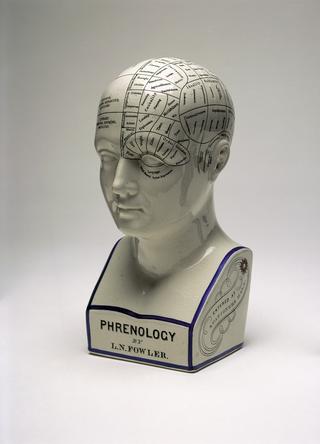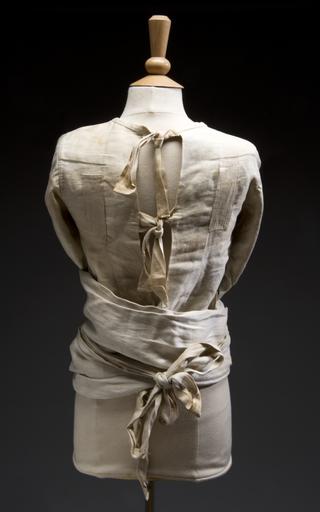




Ivory phrenological head, with areas marked off and numbered, on circular stand
Phrenologists believed that the shape and size of various areas of the brain (and therefore the overlying skull) determined personality. In the early 1800s, phrenology became popular with large numbers of ordinary people who were interested in self-improvement. However, it quickly became controversial in medical circles.
Disagreements arose between phrenologists over what parts of the brain determined which characteristics. On this carved ivory model, the eyes represent language and the area between them represents individuality. The key for the model is printed on the ivory base.
Details
- Category:
- Psychology, Psychiatry & Anthropometry
- Collection:
- Sir Henry Wellcome's Museum Collection
- Object Number:
- A132245
- Materials:
- ivory, ebony, wood (unidentified) and complete
- Measurements:
-
overall: 210 mm 127 mm, 0.43kg
- type:
- phrenological head
- credit:
- Glendining




